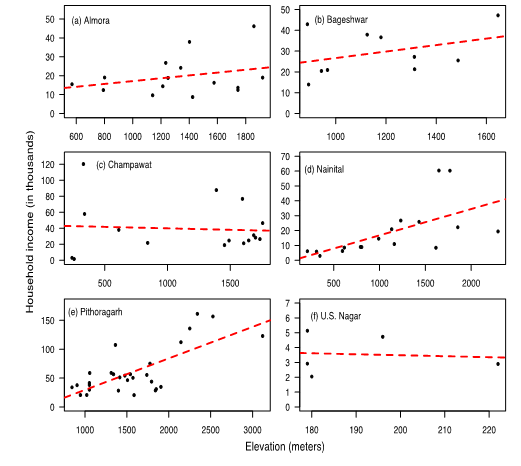Centre of Excellence on Forest Based Livelihood in Uttarakhand- A pilot study
Ministry of Environment, Forest and Climate Change (MoEF&CC)created a Centre of Excellence (CoE) on Forest based Livelihood in Uttarakhand with Uttarakhand State Council for Science and Technology (UCOST). A first of its kind in the state, the CoE delves on issues related to forest based products and dependence of forest fringe dwellers on forest resources. The Uniqueness of the mountain Specificities of Uttarakhand forests and Grasslands and their Contributions to livelihoods will be collected, accounted, collated and an analytical approach based on secondary data sources will be devised to establish a link between the ecological and economic concerns of the region. In addition to this, the generated data on various aspects of forest resources in the region will be hosted in a web server such that it is accessible to wider masses. The CoE will be the nodal hub in providing the updated dataset and information related to forest based livelihood.
Overall objectives:
• To collect all the available data on forest based produce with focus on non-timber products like medicinal plants and bamboo and to create a clearing house for the same.
• To create a resource directory of various government and non-government organizations, private institutes and experts working in the area of forest livelihood.
• To interact with people through Focused Group Discussion (FGD) and to estimate their dependence on forests for their livelihood.
• To conduct socio-economic analysis and estimate cultural dependence of the forest fringe villages on forestry.
• To do value and supply chain analysis for different forest products.
Methodology:
• This research employed both quantitative and qualitative methods in order to meet the objectives of the project. The study uses multiple sampling method to select 92 villages and 1672 households, who are members of Village Forest Councils in the state of Uttarakhand. The primary objective was to identify and evaluate the dependency of selected households on forest-based livelihoods, with a specific focus on non-timber forest products, agriculture, and livestock. To identify the villages, three grids were drawn based on altitude (below 800m, 800-2250m, and above 2250m) across six districts in the Kumaon division of Uttarakhand. The process for selecting households involved a purposive sampling approach. Subsequently, data was collected from the selected households within the 92 villages. Individual interviews and group discussions were organized in the selected villages to compile the information. Structured questionnaires were used to fill the information during interview and discussion. Regular meetings were organized in the selected villages for collecting the information on forest dependency and livelihood from forest resources. For example, for documenting traditional knowledge on medicinal value of indigenous people, interview people actively engaged in traditional health care practice were done followed by filling of semi-structured questionnaires to document their unique traditional knowledge on medicinal value of different plant species. Information on local names of medicinal plant, mode of uses and collection methods of each species was also documented. Secondary information on education, population, household etc. was collected from different line departments. Forest department was also consulted for secondary information on the income of different districts from forest-based resources i.e., MPs, timber, resin etc.
Outcome:
• A resource and knowledge center on forest-based livelihood of Uttarakhand in the form of Excellence Centre.
• Agallerydepictingrelationshipofvillagerswithforestsforlivelihood.
• Estimate of cultural dependence of forest fringe villages on forest.
• Socio-economicprofilingofforestfringevillagesofUttarakhand.
• Awarenessamongthevillagersforjudicialandsustainableuseofforestresources.
• Recommendations for the policy makers to boost livelihood of the people through forest resources while conserving them simultaneously.
• Resource directory of various government and non-government organizations working in the area of forest-based livelihood.

Average per capita annual yield and income in different districts of Kumaon region.

Average annual household income from agriculture, livestock and forest-based resources in six districts of Kumaon region

Elevational patterns of household income (a) Average annual income of household from all sources (b) Annual income from agriculture (c) Annual income from forest resources (d) Annual income from livestock.


